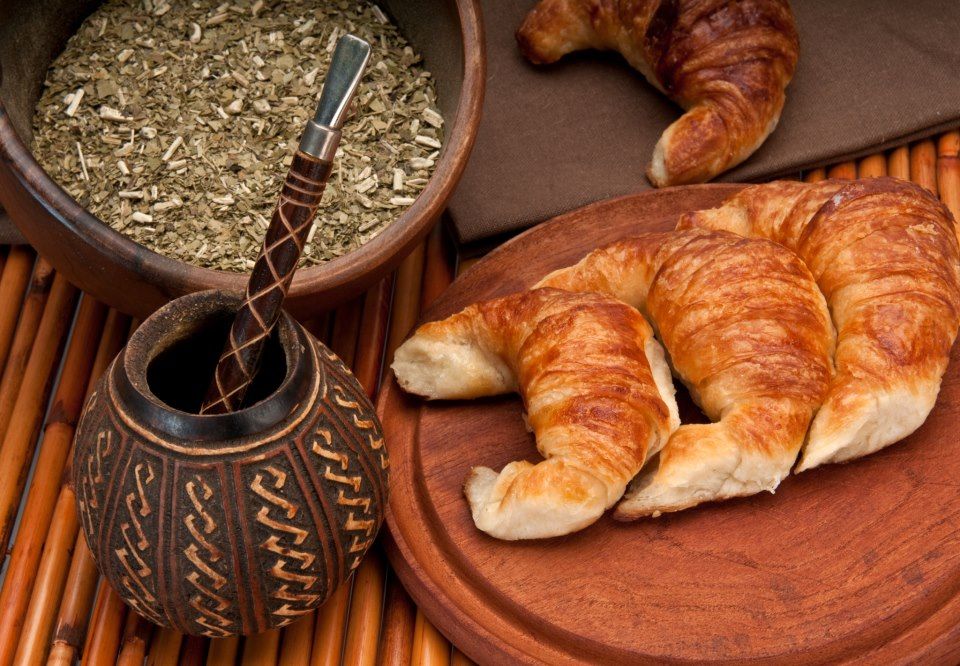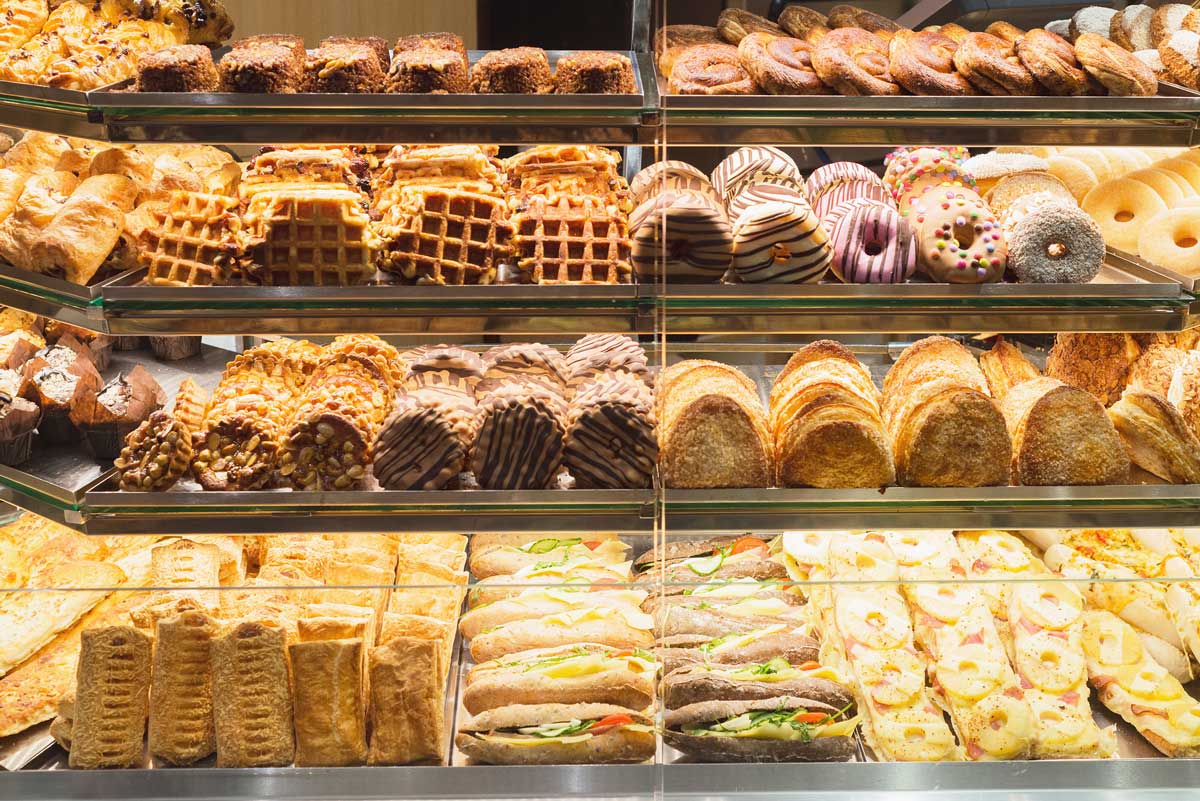Argentina
Croissants are commonly served alongside coffee for breakfast, aperitivo (a light mid-morning meal), or merienda (a mid-afternoon meal). They are referred to as medialunas ("half moons") because of their shape and are typically coated with a sweet glaze (medialunas de manteca, "half moons of butter"). Another variant is a medialuna de grasa ("half moon of lard"), which is not always sweet.

Italy
A cousin of the croissant is the Italian cornetto (in the Center and South) or brioche (in the North). These variants are often considered to be the same, but that is not completely true: the French version tends to be crispy and contains a lot of butter, whereas an Italian cornetto or brioche is usually softer. Furthermore, the cornetto vuoto (Italian: "empty cornetto") is commonly accompanied by variants with filling, which include crema pasticciera (custard), apricot jam or chocolate cream. They often come covered with powdered sugar or other toppings. Cornetto with cappuccino at the bar is considered to be the one of the most common breakfasts in Italy

Poland
On 11 November, St. Martin's Day is celebrated in the Polish region of Greater Poland, mainly in its capital city Poznań. On this day, the people of Poznań purchase and eat considerable amounts of sweet, crescent-shaped pastries called rogale świętomarcińskie ("St. Martin's croissants"). They are made specially for this occasion from puff pastry with a filling made of ground white poppy seeds, almonds, raisins, and nuts.

Portugal
The first type of Portuguese croissant is similar to the French, and can be plain or filled with custard, chocolate, fruit jam, or a typical Portuguese cream made of egg yolk and sugar, "doce de ovo". It is customary for these to also have powdered sugar on top. The second version has a similar consistency to brioche and is commonly eaten with ham and cheese. Sometimes this type is also served like toast, with a spread of butter. While the first type of croissant is considered sweet and is eaten during breakfast or tea, the second type is a more filling meal and is usually considered a sandwich and often prepared for picnics or as travel food. Both types share the same name (French/Portuguese: "croissant") but are typically found in different bakeries: the sweet croissant is more commonly found in Portuguese pâtisseries and the brioche croissant is usually found in coffeehouses.






